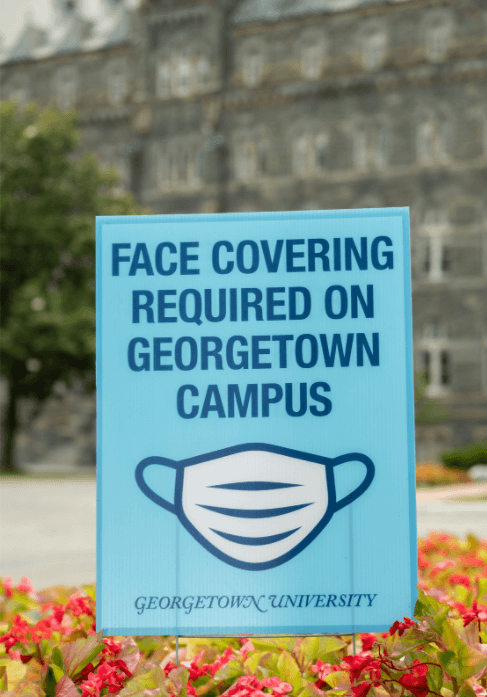Virtual Learning Is Here to Stay
By • August 13, 2020 0 2531

“There’s been more experimentation with pedagogy in the last five months at Georgetown than in the last 200 years.” — Douglas Reed of Georgetown University
As the nation grapples with the ever-widening coronavirus pandemic and the imminent start of the 2020-21 school year, families are scrambling to adjust to virtual learning from home. Having perceived the rocky end of the spring academic term as a wash educationally, many are leery of returning to online learning on the first day of school.
Given the economic and familial stresses during the pandemic and the interruptions to children’s learning and socialization, parents are longing for kids to return to school or college, with traditional daily instruction from their teachers and professors. But, like it or not, virtual learning is here to stay.
“While day-to-day life will perhaps return to ‘normal’ at some point, for education, there will have to be a new ‘normal,’” Robert Speed, Vice President for Middle East and Africa at Blackboard, wrote on the education technology firm’s blog. “Learners will now expect to be able to seamlessly switch between in-person and virtual formats, particularly in times of crisis.
”The good news is that significant positives may result, according to Georgetown University’s Douglas S. Reed, co-founder and director of GU’s master’s program in educational transformation. Virtual learning can “heighten flexibility for students,” he says, and “can also lead to student ownership” of their intellectual development, where pupils are “not just given more tasks, but more responsibility for surfacing what they’re learning and [for] sharing that in a more collaborative exercise.
”The move toward virtual instruction has accelerated not only due to the pandemic but thanks to expanding broadband connectivity, the proliferation of educational media online (including courses from institutions of higher learning), advancements in data-driven and virtual reality programming and the growing pool of tech-savvy teachers.
As a high-school history teacher for over 30 years, I can attest that the transition from the old-school, “Sage on the Stage” model to a greater emphasis on virtual teaching long preceded the onset of the pandemic. School administrators have promoted the idea of the “flipped classroom” for years. In this approach, students absorb online content posted by their instructors for homework and teachers use follow-up classes for related activities. Blended-learning instructional methods — flexibly combining online and traditional approaches — also long preceded the current crisis.
Before retiring from the classroom last year (I last taught at a D.C. private school), I was thrilled to have virtual teaching tools available to deepen students’ learning. Students could post their own iMovie, Prezi or graphics-interface projects on the class’s or the school’s homepage, use online discussion boards to delve deeply into prompts, create virtual newspapers, posters or comic strips, quiz each other on Kahoot! or deploy interactive editing features within Google Docs to write collaborative speeches and peer-edit each other’s work.
As an online tutor now, I’m amazed how much more directly I can guide students’ writing, editing and critical thinking progress as we work together, sharing screens and documents via Zoom.
In the halls of academe, profound changes are underway to prepare for the Brave New World of virtual learning. Georgetown’s Reed, who teaches courses in law, government and education, is currently developing a new course in instructional design and technology.
Reed credits GU’s Center for New Designs in Learning and Scholarship with rapidly training hundreds of faculty members in the new modalities of online learning through the center’s Course Development Institute.
“One thing we really learned last spring is that Zoom fatigue is very real,” Reed said. Finding “visual cues from very tiny spaces” when it’s hard to “read the room” is exhausting. To adjust, Reed parceled out smaller chunks of material for students to work on asynchronously, with discussion, collaboration and student-driven discovery of the materials during “synchronous” (that is, live) virtual classroom sessions.
Class size is critically important for success on Zoom, Reed pointed out. “I had a graduate seminar [on Zoom] with six Ph.D. students in the spring and that was fine,” he said. However, much larger classes, where professors or teachers simply lecture on Zoom, can be “like a bludgeon” on the students — not to mention disheartening for instructors as they cast about and only see blank boxes with students’ turned-off video screens.
Asked about the future of the conventional lecture model, Reed foresees a permanent change. “The conventional lecture class may very well not persist,” he said. A teacher or professor might spend 20 minutes delivering a “core lecture,” but will soon make the choice to “flip the course” so that students can “work on materials, maybe in groups, or in a collaborative fashion.
”Reed believes that, in response to the crisis, Georgetown University has examined and updated its teaching approaches with remarkable speed and commitment. “There’s been more experimentation with pedagogy in the last five months at Georgetown than in the last 200 years,” he said. This fall, for example, Georgetown professors will be adopting the lecture-capturing platform Panopto.
As a proudly traditional institution, Georgetown “doesn’t generally make innovations quickly,” Reed said. However, the university has moved with dispatch to offer a series of socially relevant one-credit courses for freshmen, modified its grading policies and worked to foster inclusion in online instruction for students from multiple time zones.
Reed expressed concern over how marginalized populations might suffer further as the U.S. moves toward greater reliance on remote learning without allocating sufficient public resources to school districts in need. He also counseled that, no matter what virtual tools a teacher has at his or her disposal, a course cannot be effective without thoughtful design planning and the fostering of mutual and positive relationships in the classroom.
“Good teaching has always been interactive,” Reed noted. To be sufficiently engaging, the new normal of virtual learning will demand an even higher level of that essential component.

Courtesy of Fritz Photography

